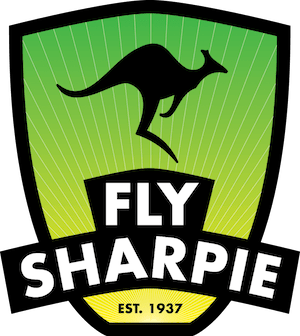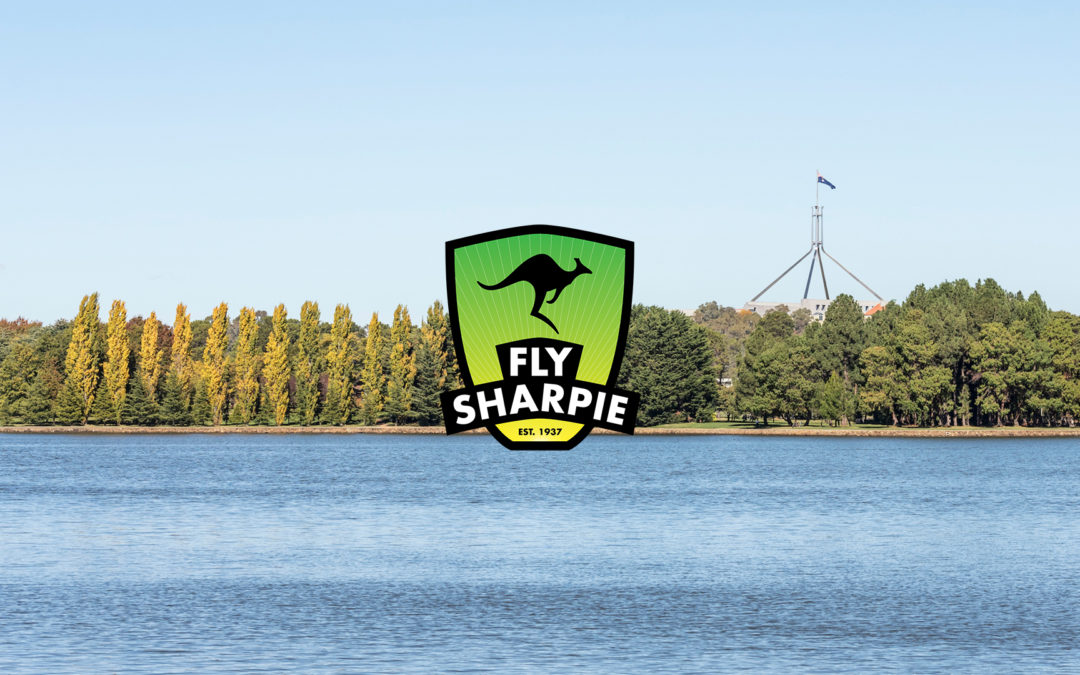Make your Sharpie Faster
By Gary McLennan -Bowling For Burgers V829 October 1995
SETUP
Rake: Use 25’3″ from the transom to the bottom of upper mast black band at the back of the sail track. The black band is up 6909 measured from the deck adjacent to the mast step. For the advanced 25’5″ light air, 25’1″ 20 knots+ , sometimes more. If shrouds adjustable, let rig forward downwind once wind is aft of the beam.
Rig tension: Leeward shroud should always just be firm.
Lowers: Trim so as the angle of entry in the bottom of the sail is similar to the mid to top of the sail, or slightly flatter. Under no circumstances should there be creases from the mast to the clew of the sail. (eg where it attaches to the outer end of the boom. ) Light air prebend to similar shape with preventer.
Spreaders: 385 long, 145mm angle measured from a line between tips/shrouds and the sail track. Shrouds should exit deck approx 1900 from forestay and 550 out from centreline. Spreaders don’t matter too much, probably the most overrated adjustment on a Sharpie. Angle important under 15 knots to hold mast to required bend for the sail and a length to allow the mast to bend 1-2″ to leeward. Angle use same rule of thumb as with lowers. Length important over 15 knots to allow mast to pump to windward.
Jib luff tension: Firm to remove most wrinkles in light air, slightly firmer as wind increases to ensure less wrinkles off the luff as wind gets stronger and pull the draft forward with deeper angle of entry.
Jib leads: 2270 mm aft measured from the forestay to the lead. 620 mm sideways from centreline to lead. Rule of thumb trim jib until the foot is correct depth. Adjust leads fore and aft until the jib luffs evenly top to bottom.
Main outhall: Mostly firm don’t bother easing it on reaches unless the main is very flat.
Cunningham: Leave It eased. Except when looking for creases when adjusting spreaders or lowers. 18 knots + pull it on hard (eg when c/board raised, jib and main eased.)
Boom vang: Upwind: When you can no longer stall the top leech telltale with the main sheet use the vang to maintain the correct twist. If the main is not being eased the top leech telltale(adjacent to the trapeze wire mast entry) should stall 30-50% of the time. Once main is being eased use the vang to control mainsail depth. More vang= ..of the main to backwind earlier than the bottom. Downwind trim so all leech telltales stall evenly then ease slightly.
Centreboard: Only raise it if the main is being sheeted outside the gunwhale. Upwind raise the centreboard, ease the jib and ease vang to enable the main to be sheeted closer to the centreline. eg over the side deck in 18+ knots. This will ensure height.
Rudder: Tuck under the boat to reduce helm. General rule centreline of rudder parallel with the transom.
TUNING
Trim Main See boom vang notes.
Jib Light airtight. Top leach telltale should flow 50% of the time, the leach close to the spreaders, generally not inside. Ease over 18-20 knots as small white caps appear or main backwinding to open the slot and improve the steering groove.
Crew position: Sheet hand sitting opposite and behind the back of the centre board case. Skipper and forward hand bunched around sheet hand. 18knots + move aft 600mm.
Technique:Upwind: Unless accelerating or driving for speed sail with the windward jib telltale luffing to achieve good height upwind. An open main leech, under sheeted jib or the boat rolling in to windward will all affect height.
Steering: steer smoothly always especially when gybing. When Gybing running square, catch a wave, gybe without turning the helm more than 5″ then when stable resume new course. When inexperienced do not worry about missing the mark or running low out of the gybe. Ensure you keep your windex dry. More aggression may be appropriate when steering waves in 15 knots +

